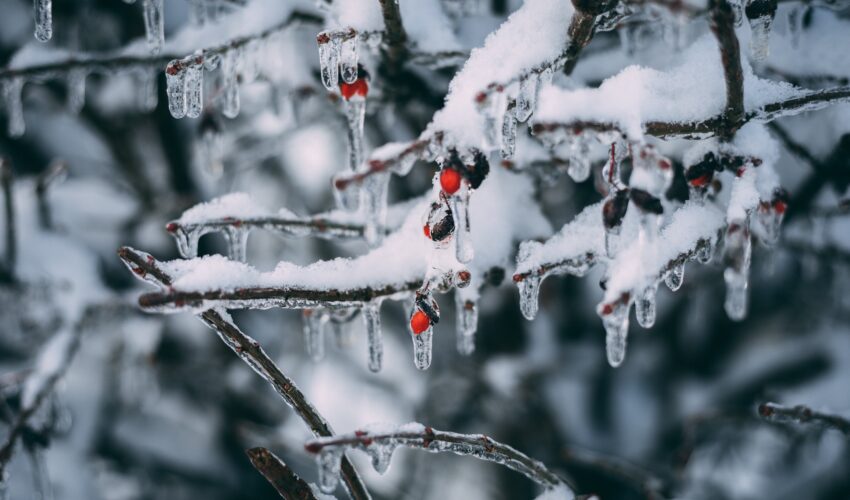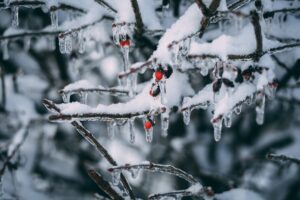
January Garden Tips for Fayetteville, NC

As the new year rolls in, many gardeners in Fayetteville, NC, might feel like their gardens are in a bit of a dormant phase. But don’t let the cold weather fool you—January is an important month for prepping your garden for the upcoming spring season. Even in the winter, there are key tasks you can do to ensure a thriving garden come warmer weather. Here’s your guide to what you should focus on this January to keep your Fayetteville garden on the right track.
1. Protect Your Plants from Frost
Fayetteville, located in the Piedmont region of North Carolina, experiences cold temperatures in January, with average lows dipping into the 30s. While the cold snaps may not last long, they can still be tough on your plants.
- Cover vulnerable plants: If you have tender perennials or shrubs, be sure to cover them with frost cloth or burlap to protect them from freezing temperatures. This is especially important for plants like camellias, azaleas, and hydrangeas, which may already be budding by mid to late winter.
- Mulch for insulation: A layer of mulch around the base of plants can help insulate their roots and protect them from frost. Pine bark, straw, or even leaves can do the trick.
2. Check for Winter Weeds
Even though your garden might not be actively growing, weeds can still take root in January. Cool-season weeds like chickweed, dandelions, and henbit are known to pop up during the winter months.
- Weed early: Take a walk through your garden beds and pull any weeds you see. Removing them now prevents them from taking hold when the growing season ramps up in the spring.
- Use pre-emergent herbicide: If you’re concerned about weeds, especially in lawn areas, consider applying a pre-emergent herbicide to prevent seeds from germinating. Timing is key—applying it too early or too late can affect its effectiveness.
3. Plan and Order Seeds
Now is the perfect time to start planning for the spring garden. Whether you’re planning to grow vegetables, flowers, or herbs, get a head start by reviewing what worked in your garden last year and what didn’t.
- Start seed shopping: Order seeds for spring planting. Make sure you choose varieties suited to our USDA hardiness zone (7b/8a) for best results. Look for early-season crops like lettuce, spinach, and peas if you’re eager to plant.
- Consider starting seeds indoors: If you want to get a jump on the growing season, start seeds for early spring vegetables indoors. Herbs like basil and parsley, as well as flowers like marigolds and sunflowers, can be started indoors in January for a head start.
4. Prune Trees and Shrubs
January is a great month to prune many trees and shrubs in Fayetteville, especially those that flower in the summer or fall. However, you should avoid pruning spring-flowering plants, such as azaleas or dogwoods, as this could remove buds that will bloom in the spring.
- Prune fruit trees: If you have apple, peach, or pear trees, now is the time to prune them. Proper pruning encourages healthier growth, helps shape the tree, and reduces the risk of disease.
- Remove dead or damaged branches: Take a walk around your garden and cut away any dead or diseased wood from your shrubs and trees. This will help prevent pest infestations and allow your plants to focus their energy on healthy growth when spring arrives.
5. Care for Your Lawn
While January is too cold for much lawn care in Fayetteville, there are still some steps you can take to ensure your lawn remains healthy.
- Avoid heavy foot traffic: Frozen grass is vulnerable to damage from foot traffic, so try to avoid walking on your lawn when it’s particularly cold or frosty.
- Check for bare spots: If you notice any patches in your lawn, you can start preparing them for seeding. In February or early March, you can reseed these areas to get your lawn ready for spring.
6. Maintain Garden Tools and Equipment
Winter is the perfect time to clean and maintain your gardening tools and equipment. Proper upkeep now will save you time and money when the growing season begins.
- Sharpen tools: Use a sharpening stone or file to sharpen the edges of your pruning shears, hoes, and shovels. A sharp tool makes the job easier and cleaner.
- Clean and oil equipment: Clean off any dirt or debris from your tools, and then oil the moving parts to prevent rust. For power equipment like lawnmowers or leaf blowers, ensure they are stored in a dry, clean place and that fuel tanks are empty to prevent deterioration.
7. Continue Composting
While you may not have much plant material to compost in the winter months, it’s still a good time to keep your compost pile going. Adding kitchen scraps like fruit and vegetable peels, coffee grounds, and eggshells will help keep the compost process active. Turning the pile regularly will help maintain the balance of heat and moisture necessary for decomposition.
- Shred leaves: If you haven’t already, use a leaf shredder or a lawnmower to shred fallen leaves and add them to your compost pile. Shredded leaves break down more quickly and make excellent compost material.
- Maintain moisture: If your compost pile is too dry, give it a light watering to keep the process moving, but avoid soaking it.
8. Keep Bird Feeders Full
Winter can be a tough time for local wildlife, so consider providing food for the birds that visit your garden. Birdwatching is an excellent way to stay connected to your garden even when it’s cold outside.
- Choose the right bird seed: In Fayetteville, you’ll likely attract species like cardinals, blue jays, woodpeckers, and sparrows. Black oil sunflower seeds, suet cakes, and peanuts in the shell are great choices.
- Keep water available: Don’t forget to provide fresh water for birds. A heated birdbath can help keep the water from freezing in the coldest months.
Conclusion: Get Ready for Spring!
January might seem like a quiet month in the garden, but there’s plenty to keep you busy if you look closely. From protecting your plants from frost to prepping for the upcoming growing season, the tasks you do now will pay off in spades come spring.
Remember, gardening in Fayetteville, NC, is all about adapting to the climate and taking advantage of every season. Stay proactive this January, and you’ll be well on your way to a flourishing garden in the months ahead.
Happy Gardening from Green Side Up!
